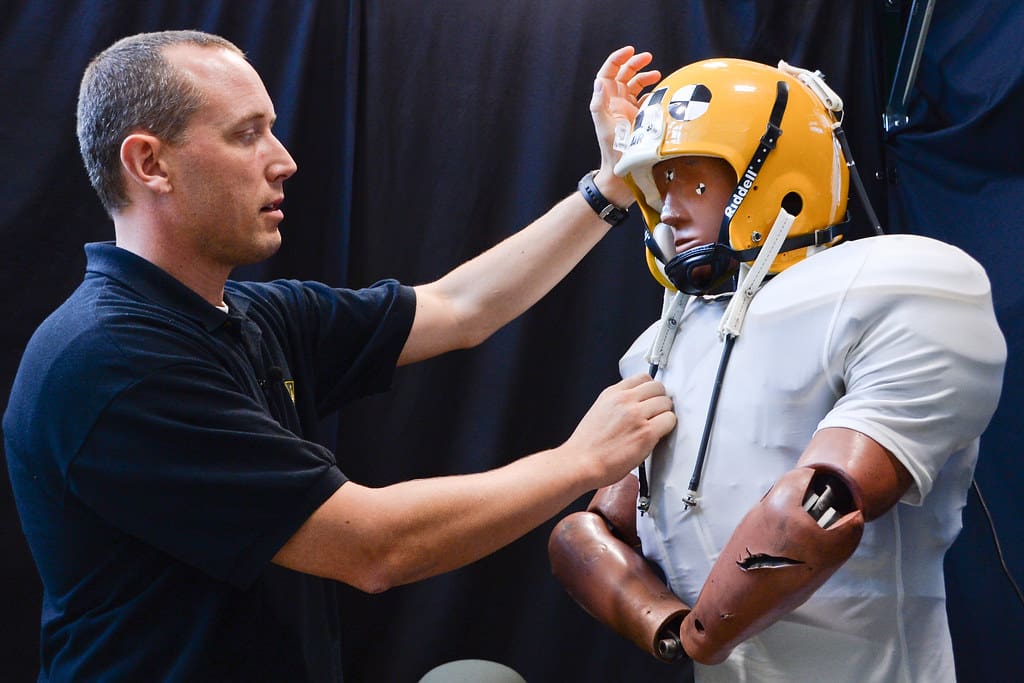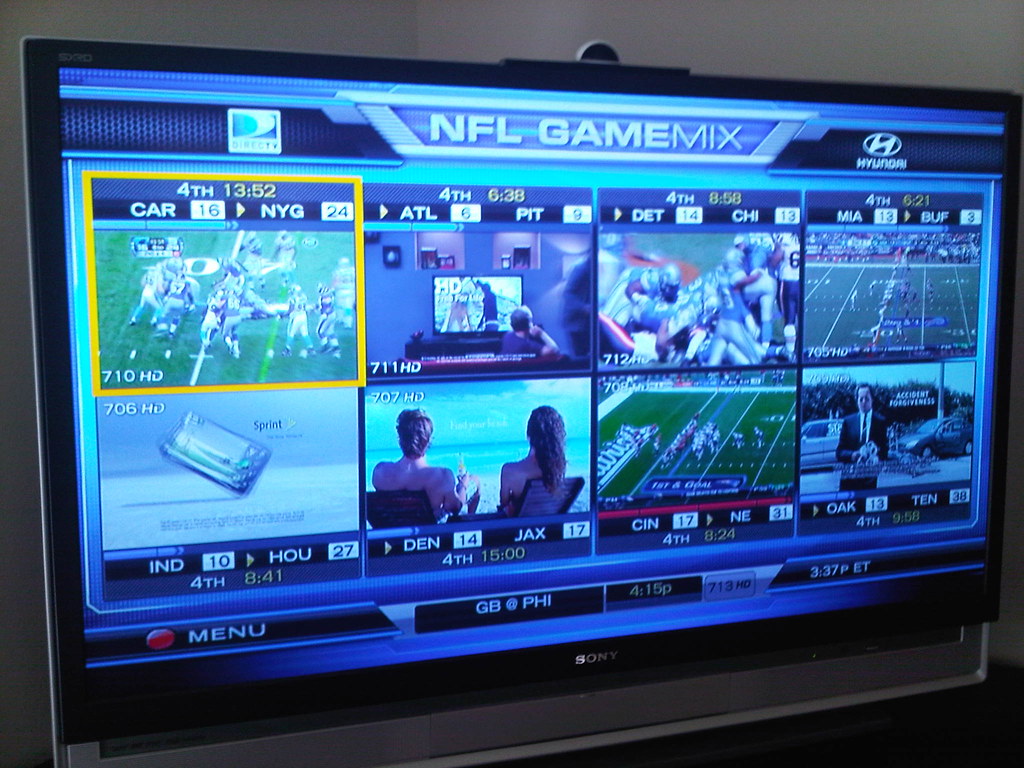Technology has transformed sports in every aspect, for athletes and spectators alike. Advancements are making sports easier to view and better and safer to play. Here are 20 ways technology is innovating sports.
20. Improved Scouting with Data

In the past, and since the beginning of time, scouting for players mostly relied on a mixture of what could be seen and gut instincts. Now, technology produces a vast amount of data, including factors never before considered. This information is analyzed for specific statistics on how consistent and accurate an athlete is. The data doesn’t lie.
19. Improved Nutrition and Training

Simply lifting weights and running the track aren’t enough. Technology has literally made a science out of nutrition and training. There are now training facilities throughout the country that offer cutting-edge technology aimed at maximizing training. GNC and other retailers have numerous supplements to improve nutrition for athletes and average people.
18. Making the Game More Fair

There was a long stretch when athletes used technology of their own — performance-enhancing drugs — to improve their performance beyond other mere mortals and give themselves superhuman abilities. While one form of technology created this cheating, the technology for detecting it has become much more sophisticated. This prevents records from being shattered unfairly. (Like the MLB’s home runs scandal).
17. Improved Field Conditions

At one time, to have more consistent fields, stadiums were fitted with poorly-laid AstroTurf, which led to many injuries. In 2024, the city of Los Angeles called for a ban on Astroturf due to its dangerous “forever chemicals.” Now, in various sports, ground crews have called for better fields, which are meticulously maintained, which makes sports better for the athletes.
16. Better Viewing Experience

Technology has improved the viewing experience for fans at the game, and especially for those watching on television. Stadiums have giant screens. On television, a big improvement is the superimposed first down line in football. Another is the score, down, yards to go, and time prominently displayed at the bottom of the TV screen. The numerous viewing angles are awesome.
15. Larger and High-Definition TVs

Enormous 50-inch and larger TVs are now in the affordable range. Their high-definition pictures (and broadcasts) not only show you fine details but also give the viewer a real sense of being there. When these first came out, everyone would view games at the home of whoever had one. Now, practically everyone’s got one.
14. Amazing Stadiums

Cities and owners have made enormous investments in improving and building new stadiums. Numerous improvements have helped gameplay and the audience experience. They’ve erected enormous high-definition Jumbotrons and have added booming sound systems. Nothing gets lost, and fans can see the highlights perfectly. Technology has taken the art of “being there” to a whole new level.
13. Controlling the Weather?

This capability is no longer science fiction. During the 2008 Beijing Olympics, China attempted to control the weather by breaking up clouds that appeared to have rain in them. Depending on your viewpoint, this is either an advancement or insane. While weather manipulation is unlikely to come to America anytime soon, what if sports could never be rained out again?
12. Opening up Small Markets

Technology, particularly the Internet, has leveled the playing field for small-market teams in terms of competition. Every team has a website with information on games, players, news, and other info. Even small teams have email and text lists of fans to keep updated. This helps cities like Milwaukee, Kansas City, and Portland compete with bigger markets like LA and NY.
11. Fantasy Sports

While fantasy sports don’t appeal to everybody, it’s a $1 billion-a-year industry. Technology has radically transformed this from people having to look at the previous day’s box score to now having up-to-the-second statistics and point updates. Technology has made fantasy sports more exciting and brings more fans together. It also teaches them the sport inside and out.
10. Video Gaming Experience

The increasing realism of the sports video games has brought more fans toward viewing the actual sports. One reason is that, by playing sports video games, gamers learn all the rules and nuances of a particular sport. It also drives an interest in particular players, which increases the fan base. Gamers buy the latest version to include new star players.
9. A Greater Connection to Athletes

The Internet and social media have allowed fans to have a greater connection with athletes than has ever existed. Team, league, and sports websites have the histories and statistics of players. Fans can send a tweet directly to and get a response from their favorite players. Athletes can notify fans of events and appearances.
8. Easier Ticket Purchasing

In the old days, people without a ticket would have to go to the walk-up window to find out if any were left. If not, they’d walk the parking lot looking for scalpers selling tickets. Now, fans can purchase tickets online through a team’s website, ticket broker, or website like StubHub. Fans can also choose the seat they prefer.
7. Technology Helps Athletes Become More Accurate

Various types of technology now help both professional and amateur athletes improve their abilities. Gadgets and software programs can hone in on specific areas or skills, analyze an athlete’s performance or movements, and recommend fixes. Such technology is now a routine part of sports and a key ingredient for success.
6. Improved Equipment and “Smart” Gear

Technology has replaced wood and rubber with titanium and nylon. Other materials include graphene, lightweight alloys, and advanced composites. In this regard, tennis rackets and golf clubs have seen the biggest leap in technological advancements. All areas of sports have seen technological developments. “Smart” equipment, including technology built into balls, clothing, and footwear, is increasing.
5. Safer Helmets

Football and baseball are using new helmet technologies to prevent concussions and head injuries. Mets’ slugger David Wright wore a Rawlings S100 that can withstand a pitch of up to 100 miles an hour. In Pro football, the soft-shelled helmet covers, “Guardian Caps,” are now used in practice to prevent head injuries, and data shows a reduction rate of 10%.
4. Technology That Helps Fans Understand the Game

Rules in many sports are intricate. Some sports, like football, constantly update the rules to improve gameplay and protect athletes. Technology has made it much easier for fans to keep up with what’s happening. Some technology takes it further, giving viewers a deeper understanding. ESPN Axis shows fans which players scored, why, and who could have prevented it.
3. Easy Access to Sports Information
Accessing information about sports has never been easier. There are countless websites with sports information. Even better, anyone with a smartphone can download an app to make following sports even easier. They can get real-time updates. They literally have sports information in the palm of their hand, available 24/7. This can transform the most casual sports fan into an expert.
ead More: 15 Sports You Didn’t Know Were in the Olympics
2. Ability to Watch More Games

Fans are no longer limited to 3 or 4 broadcast networks to watch sports. Cable TV, the Internet, broadband, and satellite have opened up dedicated sports channels and streams such as MLBTV, NFL Sunday Ticket, NBA League Pass, and more. This gives fans, no matter where they live, the ability to catch every game — even games broadcast outside their area.
Read More: How Are People Even Supposed to Watch Sports These Days?
1. Instant Replay

Instant replay is one of the most important technological innovations in sports. Human senses and observations are fallible. Replay helps ensure the accuracy of calls. Each individual sport and league is responsible for adopting practices that ensure accuracy. Replay is an important part of several leagues, with teams having the right to challenge calls and have them checked via replay.
Read More: The 10 Most Famous Sports Documentaries of All Time








